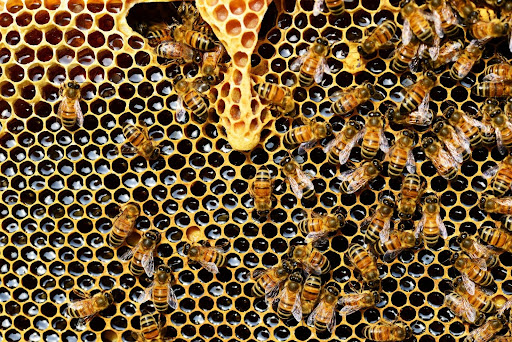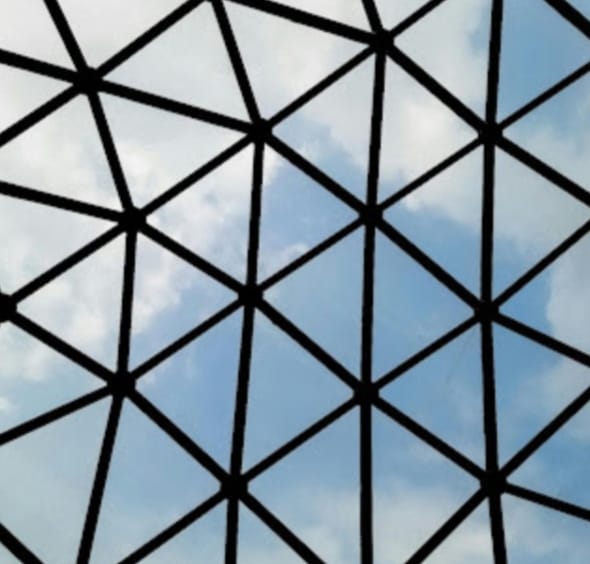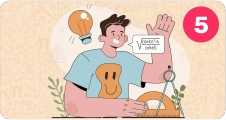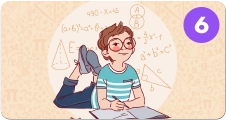Have you ever walked into a room and noticed how the floor tiles formed an interesting, repeating pattern? Or looked at a beehive and marveled at its perfect hexagonal shapes? These are tessellations—patterns where shapes fit together perfectly, with no gaps or overlaps. You might already see them in art, architecture, and even in nature! Now let’s explore what tessellations are all about, how they work, and why they are such a big deal in math. Ready? Let’s dive in!
What is Tessellation?

So, what exactly is a tessellation? At its heart, a tessellation is a pattern of shapes that fit together like puzzle pieces, perfectly covering a surface without leaving any gaps. It is like a never-ending tile pattern that spreads across the floor or design that goes on and on. From the tiles on your kitchen floor to the patterns in a piece of art, tessellations are everywhere! And yes, math plays a huge role in all of this.
The Math Behind Tessellation
Okay, let’s talk numbers and shapes. Tessellations in geometry depict how polygons—shapes that have straight sides—can fit together. Some of the polygons, such as squares, triangles, and hexagons, will naturally tessellate, meaning they can repeat ad infinitum without gaps or overlap. Pretty cool, right?
How Does It Work?
In order for a shape to tessellate, the sum of the interior angles of the polygons must equal 360° when put together. For instance, hexagons have 120° angles, and when six of them come together, their total is exactly 360°. This is why hexagons are often found in tessellation patterns, like in honeycombs. Isn’t that fascinating?

Why Is Tessellation Important in Math?
Tessellations are not just pretty patterns; they also help to understand geometry, symmetry, and how shapes work together. They allow artists, architects, and mathematicians to explore these ideas in a hands-on way. The next time you see a tiled floor or a mosaic, you will have a new appreciation for the math behind it.
Types of Tessellations
Tessellations come in all shapes and sizes, and not all of them are the same. Let’s take a look at the different types of tessellations that you’ll encounter.
1. Regular Tessellations

In regular tessellations, you use just one type of regular polygon, and it fits together perfectly without any other shape involved. Think of a floor completely covered with squares or a seamless pattern of hexagons. It’s simple, yet elegant.
Example: A classic pattern of hexagons, where every angle fits perfectly with the next.
2. Semi-Regular Tessellations

Now, this is where it gets a little more exciting! In semi-regular tessellations, multiple types of polygons are used, but each set of polygons follows a specific repeating pattern. This creates more complex and visually appealing designs.
Example: A combination of squares and triangles that tessellate together in a cool alternating pattern.
3. Irregular Tessellations

This tessellation style is simply so innovative. Irregular tessellations employ shapes that aren’t regular polygons. Such shapes can be any composition, provided they fit in each other without gaps and overlaps.
- Example: Some irregular, free-form shapes that combine in a surprisingly fun way.
Do You Know?
World Tessellation Day falls on June 17.
Tessellation Patterns and Examples
Tessellations aren’t just reserved for your math notebook, they’re all around you. From the natural world to the art world, tessellations make everything look cooler. Let’s take a closer look at some mind-blowing real-world examples.
Real-World Examples of Tessellations

Recommended Reading : Real-World Applications of Math
Nature’s Tessellations
Nature has lots of tessellations. Take honeycombs, for example, those perfect hexagonal cells that bees create to store their honey. It’s not only beautiful but efficient too; nature uses tessellations to save space and energy.
Art and Architecture
Tessellations have been employed in art for many centuries, too. M.C. Escher, for example, is the name of a famous artist, known for his mind-bending tessellations challenging our perception of space. Tessellations can be found in architecture, too – as in the case of tiled floors in ancient palaces, or the stunning mosaic walls in Islamic art.
Tech and Design
Tessellations are even applied in modern technology. Think about digital screens or game environments, which use tessellation techniques for realistic textures and backgrounds.
Want to get creative? Making your own tessellation is easier than you think. Here’s a fun way to create your own design!
- Choose a Shape: Begin with a simple polygon, such as a square or triangle.
- Cut and Slide: Cut out the shape and slide one edge over. This is where the magic begins!
- Repeat the Process: Keep adding more shapes, fitting them together like a puzzle, until you’ve covered the whole surface.
Fun Facts About Tessellations
- M.C. Escher: One of the most famous artists who explored tessellations, Escher’s work often defies reality, featuring impossible shapes and infinite repetition.
- Nature’s Tessellations: From shells to snowflakes, nature is full of tessellating patterns—did you know even some animals’ coats follow tessellation principles?

Want to Ace Mental Math? Check Out these Top Mental Math Tips For Kids
Conclusion: The Endless World of Tessellations
Tessellations are literally everywhere, from the floors we walk on to the patterns in the natural world. Once you get a hold of the magic behind these shapes, you will find them everywhere you look – on your next walk, in your favorite artwork, or even in the next game you play. So why not try it for yourself? Design your own tessellation and share it with us in the comments below!
Have some cool tessellation designs of your own? Tag us on social media and let’s see what you’ve come up with!
Want to excite your child about math and sharpen their math skills? Moonpreneur’s online math curriculum is unique as it helps children understand math skills through hands-on lessons, assists them in building real-life applications, and excites them to learn math.
You can choose from our Advanced Math or Vedic Math+Mental Math curriculum. Our Math Quiz in grades 3rd, 4th, 5th, and 6th allows further enjoyable and interactive math with on-hand lessons.
Frequently Asked Questions (FAQ)
In mathematics, a tessellation is a pattern created through repeating shapes that fit without gaps or overlaps. This shape, called a polygon, can tessellate an infinite loop on the surface. Tessellations can be found in artwork, architecture, and even nature, and they help us better understand geometric concepts such as symmetry and tiling.
Shapes that have interior angles that sum to 360° tessellate. The common shapes that tessellate are squares, equilateral triangles, and regular hexagons. These will fit together perfectly to cover a surface with no gaps or overlaps.
Yes! Tessellations can take place in irregular shapes provided the angle and sides create space between them. One may observe that an L shape, or other more unusual custom designs, have a tendency to tessellate into patterns. Creativity and design possibilities will know no bounds!
Tessellations are an important area of math as they can illustrate the important concept of symmetry, geometric transformation, and spatial relationships. Tessellations can explore patterns, how shapes fit together, and fill a given space, thus they form the core part of geometry and mathematical studies.
Tessellations are used in architecture, art, and even in nature. For instance, tiles on floors, walls, or roofs often apply tessellation patterns. Nature has honeybees make hexagonal tessellations in their hives. The shells of turtles can be seen to have tessellating patterns that provide strength and efficiency.
Absolutely! Many tessellations repeat, but some—like those in Escher’s art—are non-repeating, making for some simply stunning designs.
Just create a shape that fits with another so you do not leave gaps and repeat the process to fill up the surface.













